The Legend of Zelda: Oracle of Ages and Seasons retrospective
How Capcom's first field trip into the world of Zelda left a lasting influence on the series that can be felt today
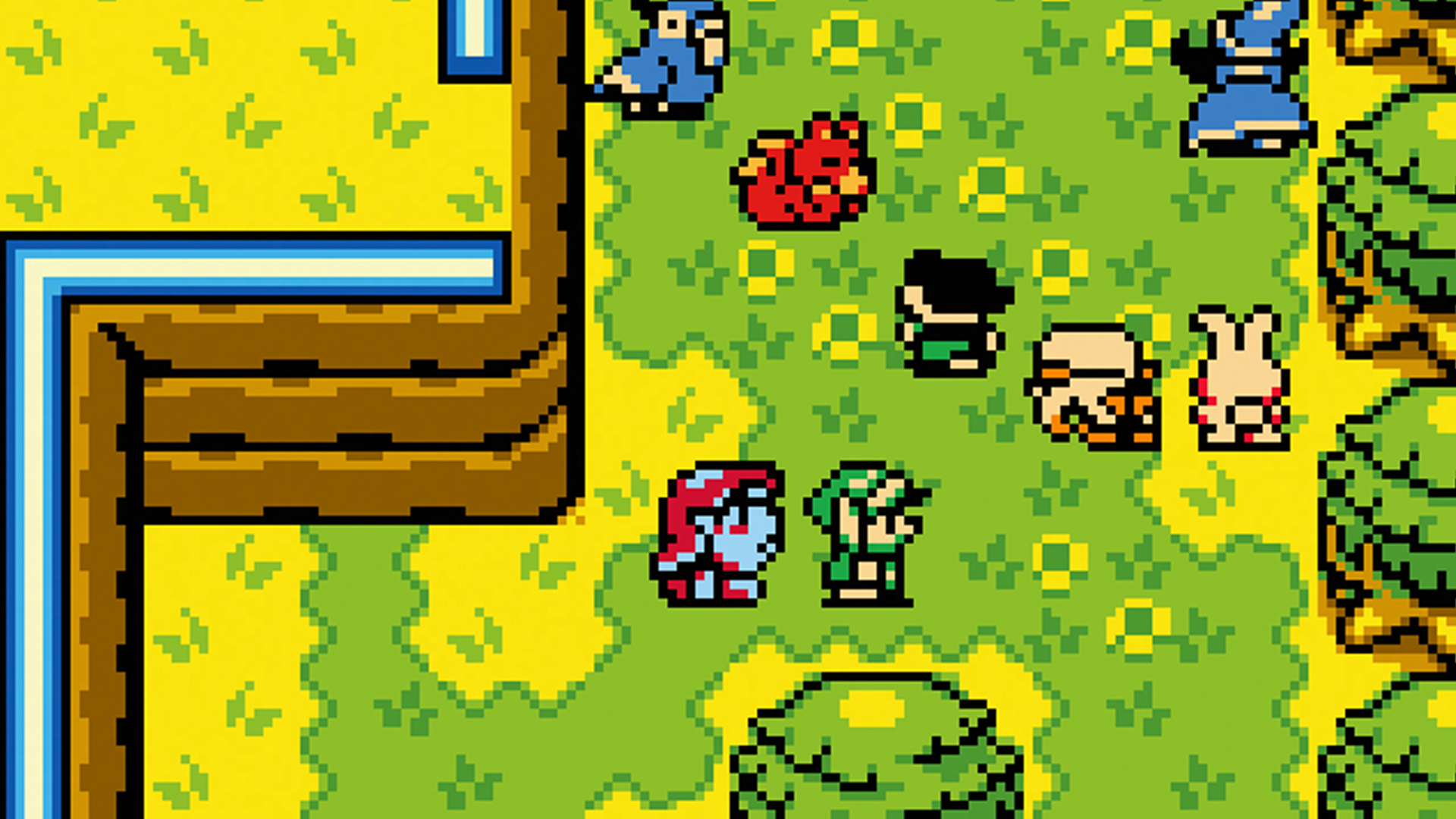
Think of gaming pairs and the mind immediately goes to the likes of Pokemon Red & Blue: one core game released as two titles thanks to a few small additions and omissions in each version. Outside of Pokémon, however, the concept can appear to be quite rare, and for good reason. Making two games, however similar they might be, to release on the same day is a tall order for any game developer.
Not content to take an easy option, Capcom's first‐ever contributions to The Legend Of Zelda series were not only a dual‐release but they were also two unique games. The Oracle Of Ages and Oracle Of Seasons were an ambitious set of titles that rewarded completionists and could be linked up for a grander adventure after the two were finished.
In 1999, Flagship (a subsidiary studio of Capcom) was looking for work. Studio head Yoshiki Okamoto met with Legend Of Zelda creator and Nintendo luminary Shigeru Miyamoto and proposed that Flagship remake the original Legend Of Zelda for the Game Boy Color, bringing Link's first adventure to a new audience. Okamoto left discussions with Miyamoto with an order of six Zelda games – two based on existing games and four original titles.
Okamoto proceeded with his original plan of remaking Zelda first as it would be a fertile proving ground for his team to learn the ropes. As work began, the team led by director and designer Hidemaro Fujibayashi found that the remake wouldn't be the easy job that Okamoto envisioned. By 1999, the original Legend Of Zelda was a hugely difficult game compared to modern releases at the time, and the team discovered that a litany of changes was needed that would be nothing short of a complete overhaul. Fujibayashi petitioned Okamoto that the team wanted to skip the remake and create an original Zelda title instead.
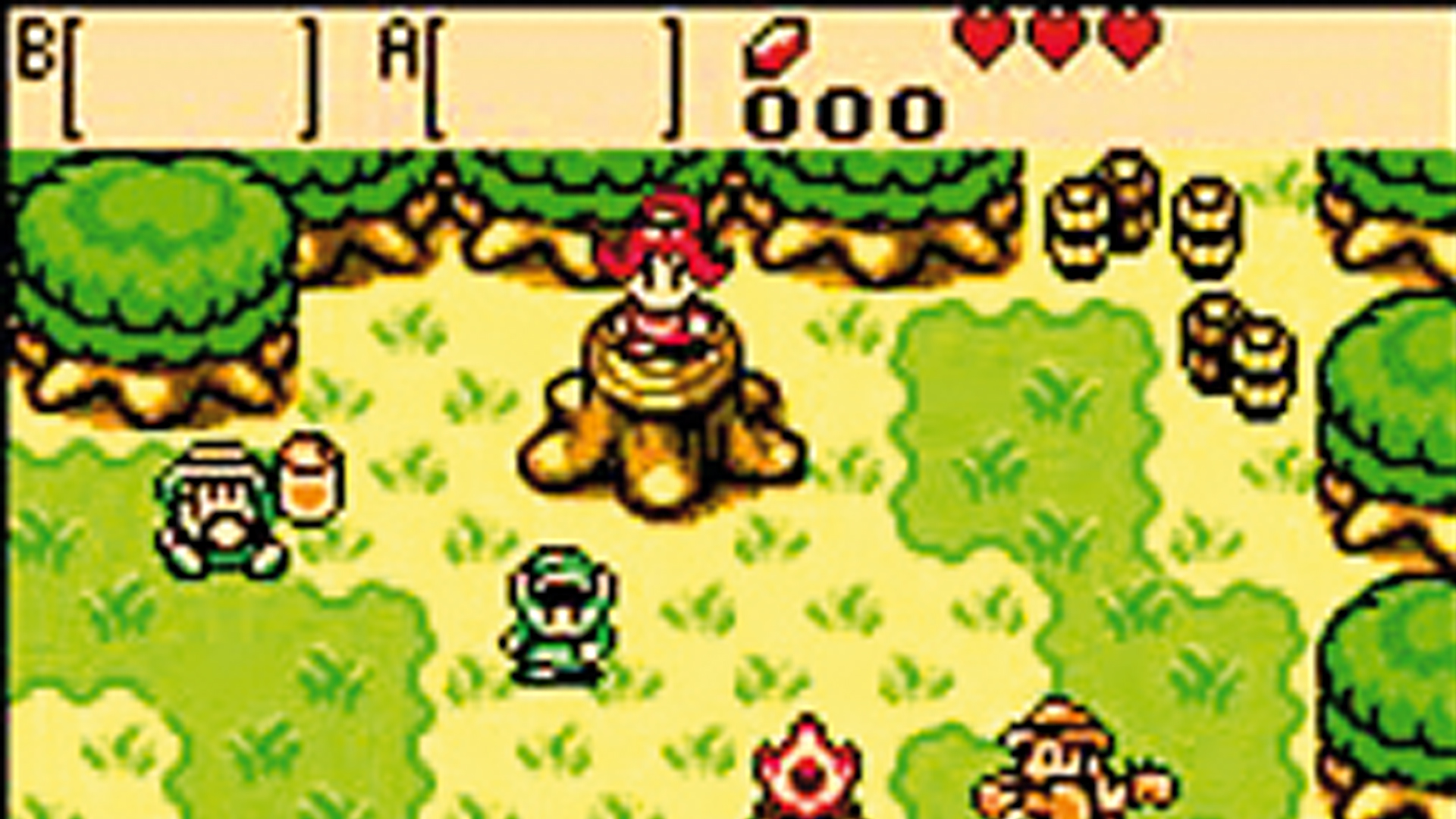
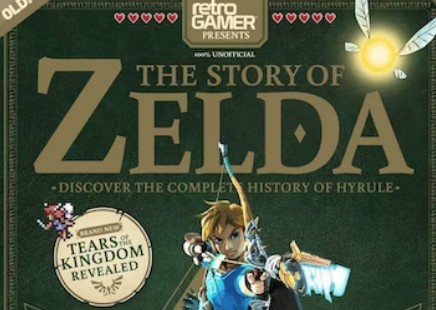
Flagship returned to Miyamoto, asking for guidance on what to do next, and Miyamoto proposed a trilogy with each game focusing on different elements of gameplay. This overall project was to be called the 'Triforce Trilogy' with each title representing one of Courage, Wisdom, and Power.
Bolstered by this exciting new premise, Flagship returned to work incorporating elements – such as a link‐up feature conceived by Okamoto – that bridged the games and tied them together into a cohesive theme. The development team's large ambition resulted in the cancellation of the third game, which was perhaps a wise choice in retrospect when you consider the wealth of love and attention that went into what are now titled the Oracle games. The two titles were released together in 2001, at the twilight of the Game Boy Color's lifespan, and what a swan song for the system they are.
Oracle Of Seasons and Oracle Of Ages see the Hyrule hero Link journeying to two very different lands and vanquishing two new foes, Veran and Onox. In Oracle Of Seasons, that new region is Holodrum, and it's there that Link meets the dancer Din. In Oracle Of Ages, meanwhile, Link visits Labrynna, where he encounters a singer named Nayru. Secretly, both Din and Nayru are also Oracles – the Oracle Of Seasons and Ages respectively – and when both are kidnapped, Link embarks out on two wildly different journeys to rescue them.
Sign up to the GamesRadar+ Newsletter
Weekly digests, tales from the communities you love, and more
The first port of call for both games involves tracking down the Maku Tree. Portrayed as male in Seasons and female in Ages, like Hyrule's Deku Tree this ancient shrub acts as each world's guardian, but they can only help once Link has found all eight of the Essences Of Time/Nature scattered about the worlds' deepest, darkest dungeons. Flagship's ambition was astounding: each game boasts unique lands and dungeons too, but more than that, they – quite brilliantly – also feature very different game mechanics.
Triforce Trilogy
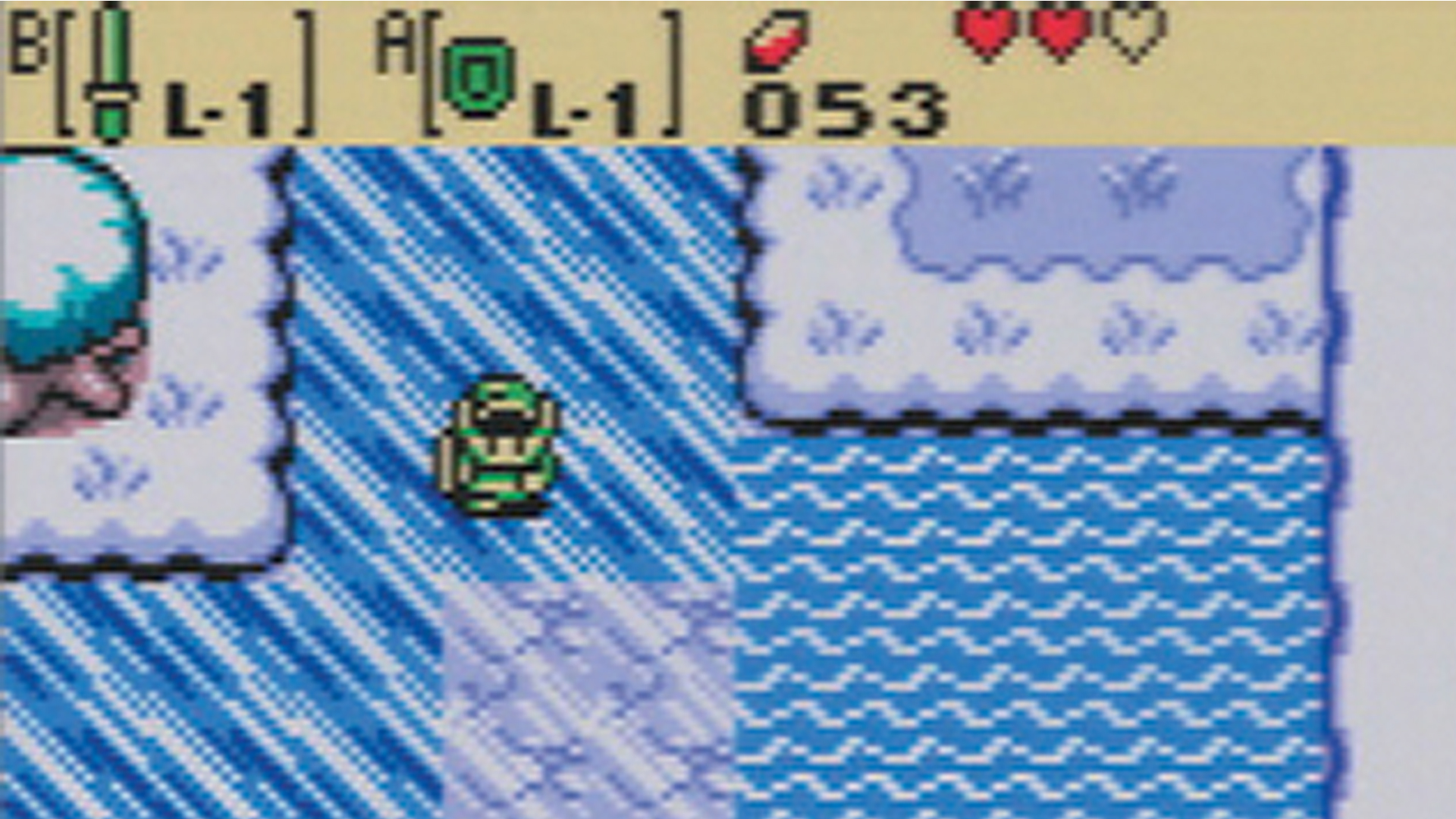
It's here where the Oracle series truly stood apart in Zelda lore. Sure, the foundations for the adventures are immediately familiar. Especially to those who had played Link's Awakening on the original Game Boy. The UI is strikingly familiar, as is the sprite art and general control scheme where you can assign items in Link's inventory to the A and B buttons. However, while bearing a resemblance to past games, this duo of Game Boy Color titles – unlike the Pokémon games which consistently dole out dual versions with small distinctions – are remarkably different to each other. Oracle Of Seasons was an action‐focused game with plenty of combat for Link to sink his sword into. Meanwhile, Oracle Of Ages was a far more puzzle‐heavy affair, throwing the plucky hooded hero up against some deviously designed conundrums. You can still see that original Triforce Trilogy design concept here, with Seasons embracing Courage or Power, where Ages is clearly championing Wisdom.
Thanks to the Harp Of Ages and the Rod Of Seasons (no prizes for figuring out which item belonged to which game), the twin adventures are even more distinct from one another. Using the Harp in Oracle Of Ages opened any hidden time portals in the on‐screen area, letting Link jump between past and present versions of Labrynna to alter events in history. The timelines feature unique worlds, and combined, they make for one gigantic adventure.
Oracle Of Seasons, meanwhile, doesn't have two worlds, though. It effectively has five. The Rod Of Seasons grants its user the power to usher in new seasons, which means that Link could travel between Holodrum's spring, summer, autumn and winter incarnations once he unlocks the Rod's full power. Each season brings in new environmental features. In certain situations, Link will have to travel to winter to pass by a giant tree that is far too leafy to squeeze past at all other times of the year, or switch to summertime to dry up a lake and enter a cave that was otherwise submerged. The fifth world is the subterranean land of Subrosia: a lava‐filled underground universe filled with secrets and mysterious Subrosian people.
Those two standalone games might have satisfied most Zelda fans, however, Capcom and Flagship innovated further than anyone would have expected them to. Individually, the Oracle games were as big and as classy as any other Legend Of Zelda game, but the pair were designed to interact through either the Game Boy Link Cable or a built‐in password system. There are four key reasons to join the games. One, to trade the 64 stat‐boosting rings hidden across the two games. Two, to carry over plot elements, meaning certain characters remembered Link's actions in the previous title. Three, to unlock new items and gain extra‐ powerful gear. And four, to play a remixed story, Dfight extra bosses and see the true ending.
Lasting legacy
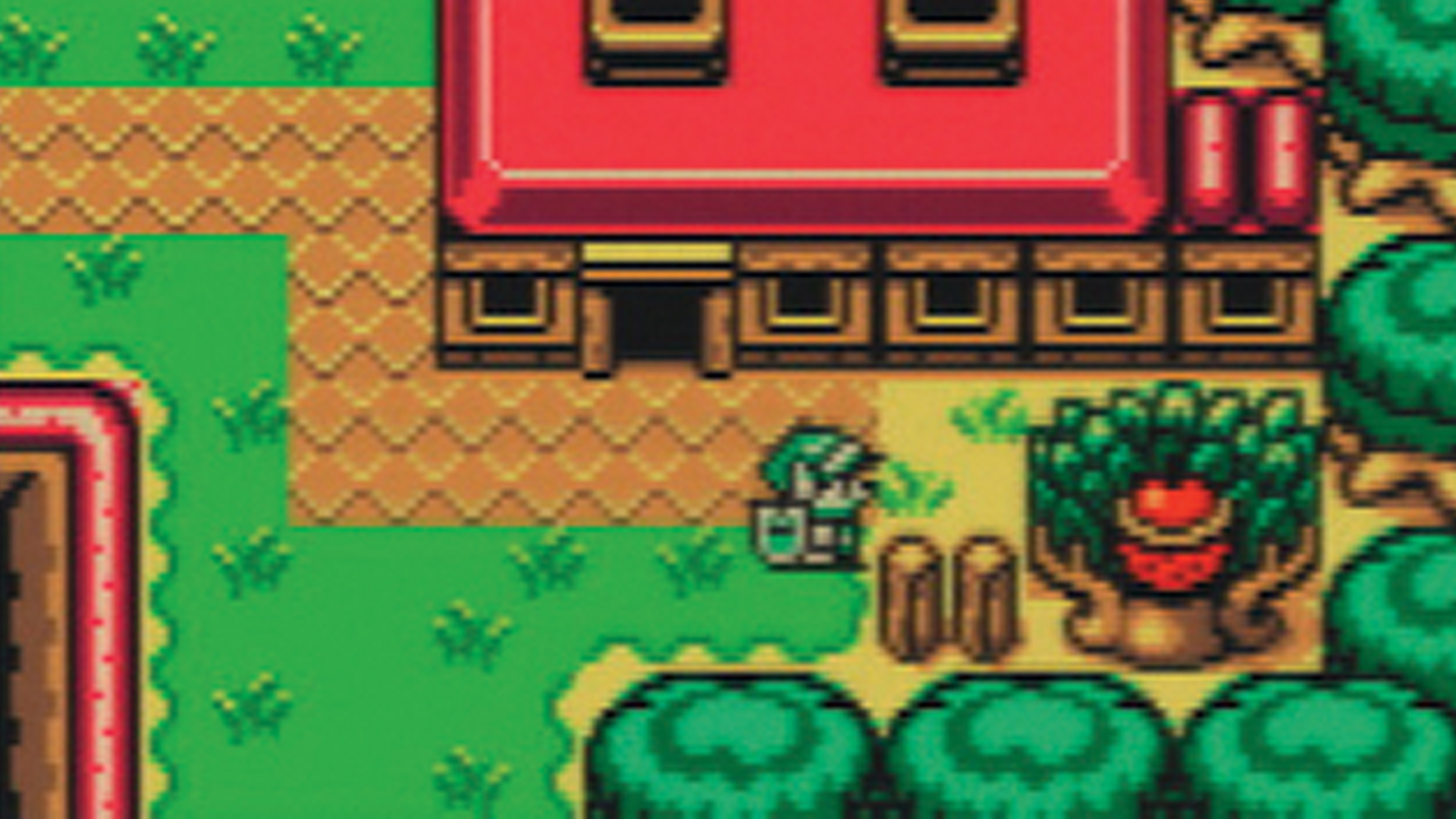
It should come as no surprise that The Legend of Zelda: Oracle of Ages & Seasons are considered to be among the best Game Boy Color games of all-time.
Despite the developmental rethink of first ditching an original Zelda remake and then scaling a trilogy down to a duet, the Oracle subseries is still one of the franchise's most complex chapters. More than that, these games were both a critical and commercial success. The likes of IGN and Nintendo Power both granted the games perfect scores, while Famitsu's jury awarded 31/40 for Seasons and 30/40 for Ages. Although it is extremely close, the consensus is that Oracle Of Seasons offers the better experience of the two, with its easy‐to‐grasp focus on action and its quartet of seasonal changes presenting more opportunities for the Game Boy Color's graphical capabilities to shine.
The Oracle games also made an impressive impact on the Zelda series as a whole. Pleased with how the games turned out, Nintendo continued its relationship with Capcom and produced a port of A Link To The Past for the Game Boy Advance in 2002, with a new multiplayer component: Four Swords. The creative pairing reached its zenith with The Minish Cap, also developed for the GBA and released in 2004.
While Nintendo decided to cease its partnership with Capcom, Hidemaro Fujibayashi – the director of the Oracle games – remained close to Zelda. He is now the creative mind behind some of the series' modern highlights, having helmed Minish Cap, Phantom Hourglass, Skyward Sword, and most crucially, Zelda: Breath Of The Wild and its follow‐up The Legend of Zelda: Tears Of The Kingdom. The next time you find yourself figuring out that "aha!" moment of a shrine puzzle, or revelling in the many ways to approach a Moblin encampment in Breath Of The Wild, you will do well to remember that the highs of Zelda today can be directly traced back to the ambitious Oracle games on Game Boy Color.
Keep up to speed with all of our celebratory Zelda coverage with our The Legend of Zelda celebration hub



